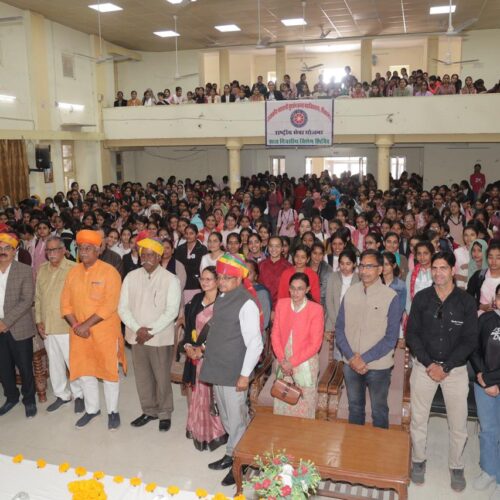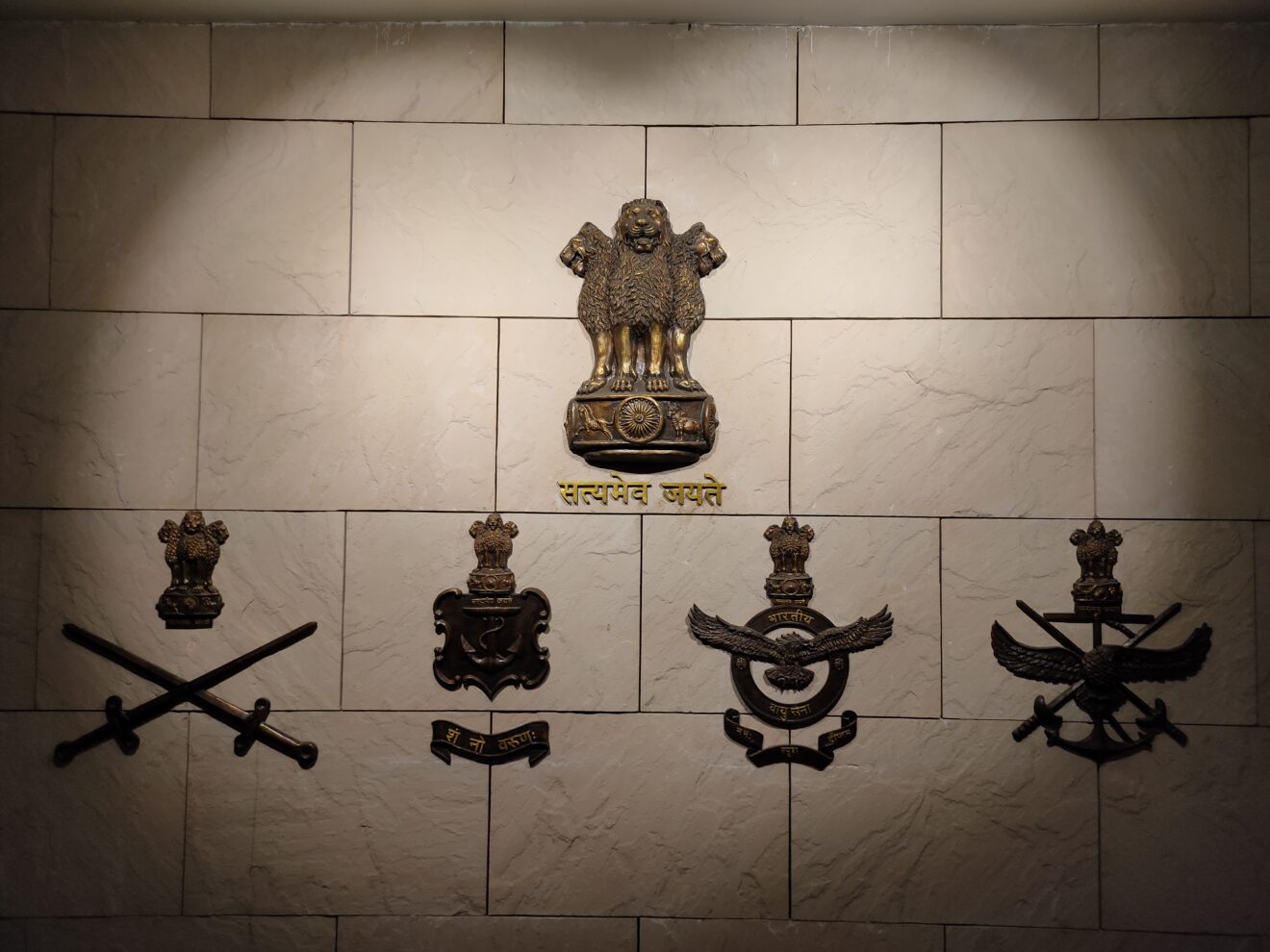BY DEFENCE JOURNALIST SAHIL | T.I.N. NETWORK
Innovation & Atmanirbharta in Action: Lt Gen Manjinder Singh Showcases Indian Army’s Technological Leap at Sapta Shakti Command
Jaipur | October 14, 2025 —
In a resounding demonstration of India’s growing self-reliance and technological prowess in the defence sector, Lieutenant General Manjinder Singh, General Officer Commanding-in-Chief, Sapta Shakti Command, presided over an extensive display of cutting-edge indigenous military technologies designed to propel the Indian Army toward next-generation warfare capabilities.
The event, held under the aegis of the Sapta Shakti Command Headquarters, brought together the best of India’s defence innovators — from DRDO labs and start-ups to private defence firms and in-house Army design teams — highlighting the country’s march towards Atmanirbharta (self-reliance) in defence technology.
Showcasing India’s Technological Renaissance in Warfare
The demonstration presented a futuristic vision of the Indian Army’s combat readiness, emphasizing integration of smart munitions, drone warfare systems, counter-unmanned aerial systems (C-UAS), and digital command networks. The Indian Army’s western theatre — covering vital border sectors from Punjab to Rajasthan — is being rapidly transformed into a testbed for digital transformation, AI-based surveillance, and real-time battlefield analytics.
Among the most striking exhibits were electromagnetic warfare systems designed to neutralize enemy communication and radar capabilities, precision-guided munitions developed under joint industry-DRDO ventures, and swarm drone formations for both reconnaissance and tactical strikes. The systems displayed were not only indigenous in design but also battlefield-tested under the Indian Army’s own validation protocols, reflecting the spirit of innovation and operational credibility.
Lt Gen Manjinder Singh: Championing Tech-Driven Military Transformation
Lt Gen Manjinder Singh, known for his proactive vision and deep understanding of modern warfare dynamics, has been instrumental in steering Sapta Shakti Command towards a technology-centric operational doctrine. Addressing the participating innovators and military officers, he emphasized that innovation is no longer an option, but a necessity for maintaining an operational edge against evolving threats in the subcontinent’s complex security environment.
He remarked,
“The future of warfare lies in integration — where man, machine, and mission operate as one seamless entity. Our focus is on strengthening indigenous capabilities and creating a self-sustaining defence ecosystem that empowers our soldiers with cutting-edge tools developed in India, for India.”
The Army Commander also lauded the ongoing synergy between the Indian Army, academia, and the private sector, underscoring that the nation’s youth — particularly from IITs, NITs, and defence technology start-ups — are the driving force behind India’s defence innovation revolution.
Key Systems Displayed: A Glimpse into Future Battlefields
The exhibition at the Sapta Shakti Command highlighted a range of disruptive defence technologies, including:
- Smart and precision-guided munitions capable of adaptive targeting through AI-based trajectory control.
- Next-generation Electronic Warfare (EW) systems capable of both offensive and defensive jamming operations across multiple frequency bands.
- Advanced surveillance and targeting systems, integrating thermal imaging, synthetic aperture radar (SAR), and long-range electro-optical sensors.
- Unmanned aerial systems (UAS) for logistics, surveillance, and attack missions, developed under the ‘Make in India’ and iDEX (Innovations for Defence Excellence) frameworks.
- Counter-drone systems (C-UAS) equipped with radio-frequency detection, laser neutralization, and electronic spoofing technologies to protect key installations from hostile drone intrusions.
- Digital command-and-control frameworks enabling real-time information sharing, situational awareness, and network-centric warfare capabilities.
Each system was designed, developed, and refined indigenously, marking a tangible shift from dependence on foreign defence suppliers to a self-sufficient innovation ecosystem rooted in India’s own industrial and technological base.
Atmanirbhar Bharat: A Defence Revolution in Motion
The Indian Army’s ongoing modernization drive under the Atmanirbhar Bharat Abhiyan has created an unprecedented ecosystem of indigenous R&D and production. From the Army Design Bureau (ADB) to field-level innovations emerging from operational formations, the military is increasingly adopting and co-developing technologies that align with India’s strategic autonomy.
Under the current transformation strategy, Sapta Shakti Command — which oversees India’s crucial western borders — has emerged as the frontline testing ground for integrated tech-based combat operations. The region, once known only for conventional desert warfare, is now embracing AI, robotics, and unmanned systems as key force multipliers.
This technological renaissance aligns closely with Prime Minister Narendra Modi’s vision of a self-reliant defence sector, and Chief of Army Staff General Upendra Dwivedi’s push for a tech-empowered Army, ensuring operational superiority and strategic depth in multi-domain operations.
Collaborations and the Industry Push
The showcase also featured participation from leading Indian defence technology players including Bharat Electronics Limited (BEL), DRDO’s Combat Vehicles Research and Development Establishment (CVRDE), and emerging private innovators supported under iDEX and SIDM (Society of Indian Defence Manufacturers) initiatives.
These collaborations represent a hybrid model of innovation, where government research agencies, armed forces, and private innovators co-develop products in record timelines — a far cry from the traditional long procurement cycles.
Experts noted that such collaborations bridge the gap between concept and combat, enabling soldiers to test, refine, and operationalize new systems with speed and precision.
From Desert Warfare to Digital Warfare
The Sapta Shakti Command’s transformation symbolizes the Army’s broader evolution from mechanized and artillery-dominated warfare to multi-domain, network-centric combat readiness. The Command’s ongoing projects include testing autonomous ground vehicles (AGVs), AI-driven decision support systems, and augmented reality-based battlefield simulation systems for mission planning and tactical rehearsal.
Military sources confirmed that several of the systems reviewed by Lt Gen Manjinder Singh will soon be inducted for field trials in forward formations across Rajasthan and Punjab, marking their transition from prototype to deployment stage.
A New Era of Indigenous Defence Power
As India faces hybrid threats that blend conventional and asymmetric warfare, self-reliant innovation becomes the backbone of national security. The Sapta Shakti Command’s initiatives under Lt Gen Manjinder Singh reaffirm the Army’s unwavering commitment to modernization through innovation, ensuring that the Indian soldier remains one step ahead in the rapidly changing battle environment.
This event not only demonstrated hardware but also showcased a shift in military culture — one that embraces experimentation, encourages indigenous design, and fosters collaboration between soldiers and scientists.
Conclusion
The exhibition under Sapta Shakti Command was more than a technological showcase — it was a statement of India’s evolving military identity. It represented a fusion of tradition and technology, where the spirit of Atmanirbharta meets the realities of modern warfare.
Through initiatives like these, the Indian Army continues to redefine its operational edge, proving that India’s road to self-reliance is not just about producing weapons — but about building an ecosystem of innovation, resilience, and strategic independence.
By Defence Journalist Sahil | T.I.N. Network
नवाचार और आत्मनिर्भरता का संगम: सप्त शक्ति कमांड में भारतीय सेना की तकनीकी छलांग का नेतृत्व कर रहे लेफ्टिनेंट जनरल मंजिंदर सिंह
जयपुर | 14 अक्टूबर 2025 —
आत्मनिर्भर भारत के विज़न को साकार करते हुए भारतीय सेना ने आज एक बार फिर यह साबित किया कि देश की रक्षा अब विदेशी तकनीक पर निर्भर नहीं, बल्कि घरेलू नवाचार और स्वदेशी विज्ञान से सशक्त हो रही है।
लेफ्टिनेंट जनरल मंजिंदर सिंह, जनरल ऑफिसर कमांडिंग-इन-चीफ, सप्त शक्ति कमांड, ने आज जयपुर में आयोजित एक भव्य प्रदर्शन में भारतीय सेना की अत्याधुनिक तकनीकी उपलब्धियों और स्वदेशी रक्षा नवाचारों का अवलोकन किया, जो आधुनिक युद्ध के स्वरूप को पूरी तरह से बदलने की दिशा में कदम है।
यह आयोजन सप्त शक्ति कमांड मुख्यालय के तत्वावधान में हुआ, जिसमें DRDO, निजी रक्षा कंपनियों, स्टार्टअप्स और भारतीय सेना की डिजाइन इकाइयों ने भाग लिया। इस प्रदर्शन ने यह दिखाया कि भारत किस प्रकार रक्षा उत्पादन के क्षेत्र में पूर्ण आत्मनिर्भरता और तकनीकी प्रभुत्व की ओर बढ़ रहा है।
भविष्य के युद्धक्षेत्र की झलक
प्रदर्शन में दिखाए गए सिस्टम और हथियारों ने यह संकेत दिया कि भारतीय सेना अब पूरी तरह डिजिटल, स्वचालित और आर्टिफिशियल इंटेलिजेंस आधारित युद्ध प्रणाली की ओर बढ़ रही है।
इसमें शामिल थे —
स्मार्ट गोला-बारूद (Smart Munitions),
ड्रोन और काउंटर-ड्रोन (C-UAS) सिस्टम,
इलेक्ट्रोमैग्नेटिक वारफेयर (EW) तकनीक,
सटीक लक्ष्य साधने वाले उन्नत निगरानी और सेंसर सिस्टम,
और डिजिटल नेटवर्क आधारित कमांड-एंड-कंट्रोल प्लेटफॉर्म।
ये सभी प्रणालियां भारतीय अनुसंधान एवं विकास संस्थानों द्वारा देश में ही विकसित और परीक्षणित की गईं हैं, जिससे यह स्पष्ट होता है कि अब भारत केवल उपयोगकर्ता नहीं, बल्कि वैश्विक रक्षा नवाचार का निर्माता बन चुका है।
लेफ्टिनेंट जनरल मंजिंदर सिंह का विज़न
लेफ्टिनेंट जनरल मंजिंदर सिंह ने अपने संबोधन में कहा —
“भविष्य के युद्ध में मानव, मशीन और मिशन का एकीकृत संचालन ही जीत का आधार बनेगा। हमें भारत की ज़रूरतों के अनुरूप, भारत में ही विकसित समाधान चाहिए — और यही आत्मनिर्भर भारत की सच्ची भावना है।”
उन्होंने कहा कि भारतीय सेना अब सिर्फ युद्धक बल नहीं, बल्कि तकनीकी रूप से सशक्त संगठन बनने की दिशा में अग्रसर है।
उनके नेतृत्व में सप्त शक्ति कमांड, जो भारत-पाकिस्तान सीमा क्षेत्र की रक्षा के लिए अहम भूमिका निभाती है, आज AI, ड्रोन, रोबोटिक्स और डिजिटल वारफेयर के क्षेत्र में अग्रणी बन चुकी है।
प्रदर्शित प्रणालियां और तकनीकें
प्रदर्शन में जिन प्रणालियों ने ध्यान आकर्षित किया, उनमें प्रमुख थीं:
- AI आधारित स्मार्ट प्रिसिशन म्यूनिशन – जो लक्ष्य के अनुसार खुद को समायोजित कर सटीक वार कर सकती हैं।
- इलेक्ट्रोमैग्नेटिक वारफेयर सिस्टम्स – जो दुश्मन के संचार और रडार नेटवर्क को जाम कर सकते हैं।
- उन्नत निगरानी और लक्ष्य भेदन प्रणाली – जिसमें थर्मल इमेजिंग और सिंथेटिक अपर्चर रडार शामिल है।
- स्वदेशी ड्रोन और काउंटर ड्रोन सिस्टम्स – जो दुश्मन के ड्रोन हमलों से रक्षा करने में सक्षम हैं।
- डिजिटल कमांड एंड कंट्रोल नेटवर्क – जो युद्धक्षेत्र में रियल-टाइम डाटा शेयरिंग और निर्णय प्रक्रिया को सक्षम बनाते हैं।
इन सबका विकास Make in India और iDEX (Innovations for Defence Excellence) जैसी योजनाओं के तहत हुआ, जिससे सेना में नवाचार की गति कई गुना बढ़ी है।
आत्मनिर्भर भारत की दिशा में भारतीय सेना का अभियान
प्रधानमंत्री नरेंद्र मोदी के नेतृत्व में शुरू हुई आत्मनिर्भर भारत योजना ने रक्षा क्षेत्र को नई दिशा दी है।
भारतीय सेना अब न केवल विदेशी तकनीक पर निर्भरता घटा रही है, बल्कि स्वदेशी अनुसंधान और उद्योगों को जोड़कर एक मजबूत रक्षा पारिस्थितिकी तंत्र बना रही है।
लेफ्टिनेंट जनरल मंजिंदर सिंह के नेतृत्व में सप्त शक्ति कमांड इस परिवर्तन का अग्रणी चेहरा बनकर उभरा है। यह वही क्षेत्र है जहाँ कभी केवल रेगिस्तानी युद्ध की तैयारी होती थी, लेकिन आज यहाँ AI, Robotics, Digital Command Networks और Cyber Capabilities के ज़रिए भविष्य के युद्धों की तैयारी की जा रही है।
रक्षा उद्योग में सहयोग का नया मॉडल
इस कार्यक्रम में DRDO, BEL, SIDM और कई निजी स्टार्टअप कंपनियों ने हिस्सा लिया।
यह सहयोग अब एक नया “हाइब्रिड इनोवेशन मॉडल” बन चुका है — जहाँ सैन्य आवश्यकता, वैज्ञानिक नवाचार और औद्योगिक उत्पादन एक साथ आगे बढ़ते हैं।
अब तकनीकें केवल प्रयोगशालाओं में नहीं रुकतीं, बल्कि सीधे सैनिकों के हाथों में पहुंचकर मैदान में परीक्षण और सुधार की प्रक्रिया से गुजरती हैं।
डिजिटल वारफेयर का युग
सप्त शक्ति कमांड ने हाल के वर्षों में ऑटोनॉमस ग्राउंड व्हीकल्स, AI आधारित निर्णय प्रणाली, और AR (Augmented Reality) आधारित युद्ध सिमुलेशन जैसे कई प्रोजेक्ट्स शुरू किए हैं।
यह प्रयोग अब केवल विचार नहीं रहे — आने वाले महीनों में इनका वास्तविक तैनाती परीक्षण राजस्थान और पंजाब के अग्रिम मोर्चों पर किया जाएगा।
नवाचार की संस्कृति: सैनिक और वैज्ञानिक साथ
यह कार्यक्रम केवल तकनीकी प्रदर्शन नहीं था, बल्कि यह सैन्य-सांस्कृतिक परिवर्तन का प्रतीक भी था।
अब भारतीय सेना में नवाचार, सहयोग और आत्मनिर्भरता की भावना को संस्थागत रूप से अपनाया जा चुका है।
हर सैनिक अब केवल उपयोगकर्ता नहीं, बल्कि नवाचार प्रक्रिया का हिस्सा है।
सप्त शक्ति कमांड में हुआ यह आयोजन दर्शाता है कि आधुनिक भारत की रक्षा शक्ति केवल हथियारों में नहीं, बल्कि सोच में भी आत्मनिर्भर हो रही है।
भारतीय सेना अब एक नई दिशा में बढ़ रही है — जहां परंपरा और तकनीक मिलकर भविष्य की रक्षा सुनिश्चित करती है।
यह आत्मनिर्भरता की भावना केवल नीति नहीं, बल्कि राष्ट्रीय सुरक्षा की नई परिभाषा बन चुकी है।














Add Comment